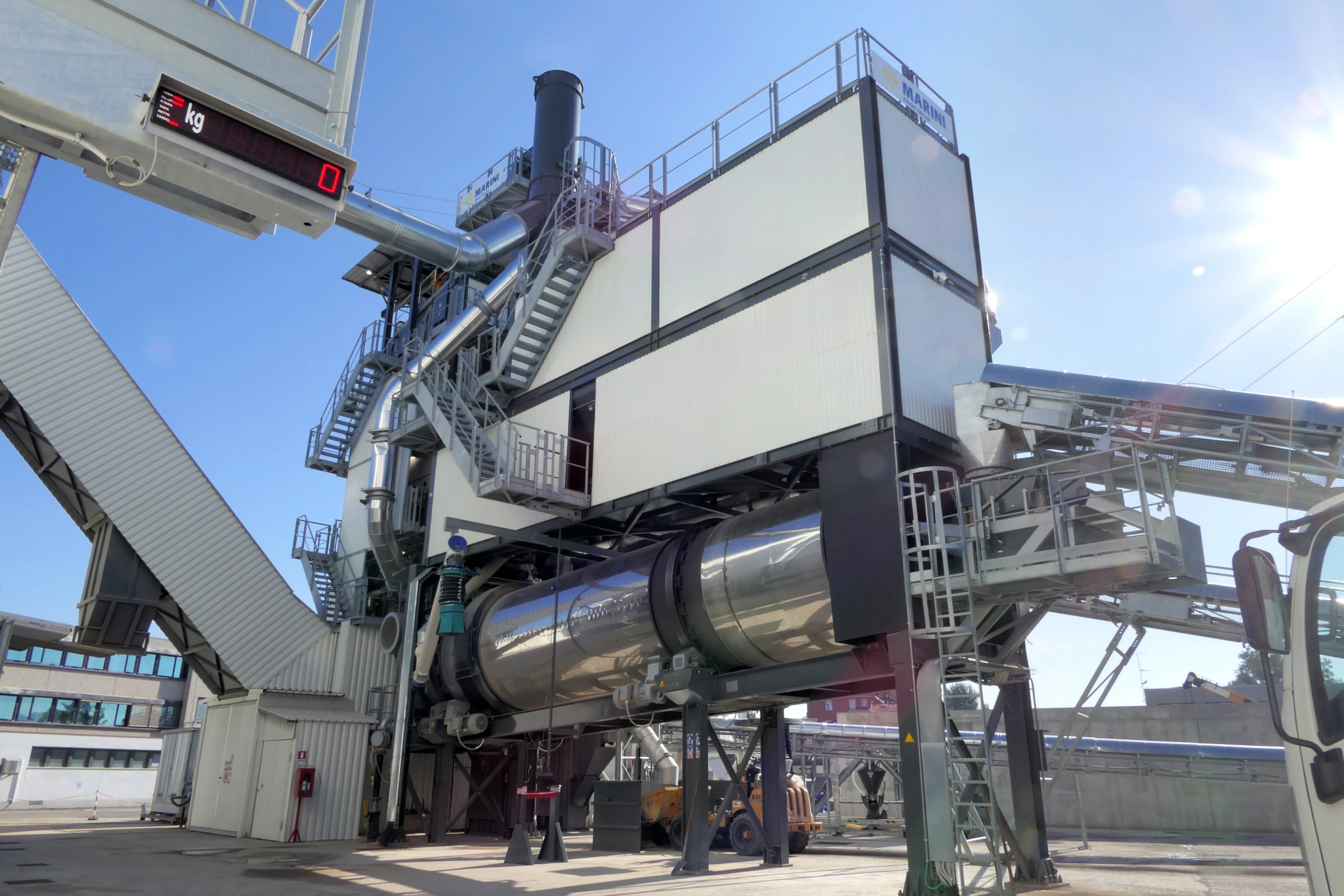
The European Commission has recently adopted several initiatives aimed at reducing pollution from synthetic polymer particles – microplastics. It has been noted that road marking paint releases microplastics and is recognised as an emitter under the initiative but is exempt from being regulated.
The European Union Road Federation, ERF, has been closely following the discussions, conference presentations, academic papers and political debates surrounding the issue of microplastics and road paint. As far as the current initiatives go, paint is listed as a producer of emitted microplastics. But there is a big difference between what is called “intentional microplastics” emission and “unintentional microplastics” emission.
At the moment, road marking paint falls into the unintentional category, explains Luca Lottero, policy and project officer at the ERF. Microplastic release from road markings in the environment is a consequence of abrasion from traffic and must be considered unintentional, while this regulation aims at reducing the microplastics intentionally added to certain products. For the immediate future road making paint is exempt although it has been noted that it still will emit microplastics to a lesser or greater extent.
“Our point is that road markings are a small contributor in term of microplastic emission,” says Lottero. “They are an essential safety device while other “paints” have decorative purposes and this should be taken into account for future regulation.”
For the intentional source of microplastics, the aim is to reduce as much as possible the inclusion of microplastics in the product. “For the unintentional sources the goal is to develop inter alia, standardisation, certification and regulatory measures as well as harmonising methods for measuring their releases,” he says.
“So we are not expecting a “ban” but some more certification to be provided to competent authority. When it comes to paints specifically, the text on pellet losses says that more assessment are necessary to find the best measures.”
Road markings are essential to safe, efficient and inclusive highway systems, helping enable the effective movement of people and goods, reducing collisions and harmful impacts on vulnerable road users and communities. As such, says Lottero, they contribute to the ambitious goal of a Europe without road fatalities by 2050 contained in the Vision Zero strategy published by the European Commission in November 2022.
“For this reason, the societal benefits of good quality road markings should be taken into consideration and the EU Commission should not treat them as decorative paints when it comes to regulation,” he says.
As stated in the position paper released by the ERF in December 2022 titled Road Markings and Microplastics, a good portion of the scientific literature on this subject has been dominated by numerous misconceptions and false assumptions due to the lack of industry-expert involvement and the absence of data derived from practices.
The road marking sector is committed to manufacturing sustainable systems while at the same time providing the highest levels of safety for all road users. The ERF says it remains committed to contributing to the discussion by bringing into focus for any study the viewpoint of its members as well as other relevant and trusted stakeholders within the industry. As Tomasz Burghardt, road marking systems researcher with SWARCO points out, microplastic release from abrasion is extremely low. "In the recent EU report (https://data.europa.eu/doi/10.2779/917472), despite assuming completely unrealistic 30-74% abrasion given by a lobbyist group, road marking contribution to microplastic pollution was estimated at 0.7-1.3," he says. "If one were to calculate per field research outcomes, with abrasion consistently listed at <5%, the contribution of road markings to microplastic pollution would be <0.07%."
But what is actually being banned?
In essence, the new regulation restricts the manufacture and sale of organic synthetic polymers that are insoluble and resistant to degradation, both as substances on their own and where they are intentionally added to products that release microplastics when used. The definition of microplastics used to establish the restriction is very broad, covering microbeads (particles smaller than 5mm) and fibre-like particles (particles under 15mm in length and with a length to diameter ratio greater than 3).
The main measure adopted by the Regulation (EU) 2023/2055 is to ban the sale of these microplastics as substances on their own or of products that use them - in mixtures in a concentration equal to or greater than 0.01 % by weight.
Granular infill
Some examples of common products included in the ban are granular infill for use on synthetic sports surfaces, which constitutes the largest source of environmental emissions of intentionally-present microplastics. The ban will come into force after a period of eight years to give pitch owners and managers time to switch to other alternatives and to allow for most existing pitches to reach their natural end-of-life.
Cosmetic products
Cosmetic products that use microplastics for the purposes of exfoliation (microbeads) or to obtain specific textures, fragrances or colours. The ban will come into force immediately for cosmetic products containing microbeads, while the transition period will be between four and 12 years for other cosmetics, depending on the complexity of the product, the need for reformulation and the availability of suitable alternatives.
Other products
Other products affected include detergents, fabric softeners, loose glitter, plant protection products, toys, etc. In terms of the entry into force of the ban for these products, in some cases – such as glitter - the ban will be immediate, whereas a transitional period of several years is provided in other cases.
The sale ban will not apply to products that do not release microplastics when used or where their release can be minimised - construction materials for example. Products used on industrial sites, in vitro diagnostic devices and some food additives are also excluded from the ban, although manufacturers will have to provide instructions on how to use and dispose of the product in order to prevent the release of microplastics.
Equally, products that are already specifically regulated at EU level, such as medicinal products (for human and veterinary use), food and feed, and food additives are also excluded from the scope of the Regulation.
The European Commission is hoping that these measures will lead to a 70% reduction in microplastic emissions or the equivalent of preventing the release into the environment of around half a million tonnes of these products over the next 20 years.
To visit the regulation, click here.









